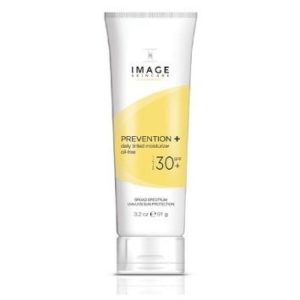There are three main types of skin cancer: melanoma, basal cell carcinoma, and squamous cell carcinoma. It would most likely be the basal cell carcinoma or squamous cell carcinoma variety if you were to get skin cancer. Melanoma cancer is less common, but it is a very aggressive cancer and can be fatal if not treated early. Basal cell carcinomas and squamous cell carcinomas are more common in older people, while melanoma tends to affect younger people.
As with any ailment or disease, it is always best to catch cancer early so that it doesn’t have the chance to spread. If given a chance to spread, it is much more difficult to remove and, thus, to recover from. One out of every four people dies from cancer every year in the United States alone. Many people die from cancer simply because they did not catch it in time. The best way to beat cancer is to stop it in its tracks.
Unfortunately, some people are at a higher risk of developing skin cancer than others, so it is important to know if you are at a higher risk so you can take the necessary precautions to protect yourself.
You may be at a higher risk for developing skin cancer if you:
- Have had a severe sunburn
- Had burns other than a sunburn
- Work indoors
- Spend a lot of time outdoors
- Related to family with a history of skin cancer
- Have multiple, large, or unusual moles since birth
- Have already been treated for skin cancer
- Have a genetic disorder such as albinism or xeroderma pigmentosum
- Have light skin, or hair or green or blue eyes
Don’t Overlook the Skin You’re in
The good news is that many cancers can be detected fairly easily because they often appear as lesions on the skin. If you discover an incidence such as a mole on your skin, it doesn’t necessarily mean that you already have cancer, but it could develop into more serious so it is best to get to checked out by your doctor.
 Most people have a mole or even a few and can be different shapes and colors. However, if you have one that looks different from other moles, you will want to get it checked out.
Most people have a mole or even a few and can be different shapes and colors. However, if you have one that looks different from other moles, you will want to get it checked out.
Moles that are considered to be abnormal can become cancerous. They may be irregular in shape and are often quite large. They will also typically be different colors, such as brown, red, and tan.
If you have an area on your body that is covered in brown, scaly, or rough skin, it may be an indication that you have actinic keratosis. This type of skin condition could indicate that you have squamous cell carcinoma.
If you are ever in doubt, it is always best to get checked out by your doctor. If it turns out to be nothing, at least you will have peace of mind that you don’t have cancer.
You will experience different symptoms and possibly concerning characteristics, depending on the type of skin cancer you have. For example, if you have the basal cell carcinoma type of skin cancer, you will likely see a smooth and raised bump on your neck, head, or shoulders. You may also see a depression or an ulceration much like a sore but one that doesn’t seem to heal. You may also see tiny blood vessels within the tumor.
If you have the squamous cell carcinoma cancer type, then you will likely see a red, scaling bump that may also bleed.
Melanoma cancer is often brown or black in color and will change in size. It may also change in color and will often bleed and become itchy and irritable.
A helpful way to identify melanoma is to remember the following list:
- Asymmetry-is the lesion uneven?
- Border-does the border look irregular or notched?
- Color-is the color white, tan, brown, black, blue, or red?
- Diameter-is the size as big as a pencil eraser?
- Evolution- has the mole changed in any way?
What Happens Next?
If you think that you may have a cancerous mole and want to get it checked out, first contact your family doctor. Or you may get referred to a dermatologist who specializes in identifying various skin cancers. You may need to have a biopsy to better examine the affected area. This is often done right in the office of your dermatologist so you won’t have to wait long to get the results back. If it turns out that you have a more serious cancer such as malignant melanoma, you may need to go through more tests to determine the severity of the cancer, depending on the size.
Prevention is Key
There are many ways to protect your skin so that your chances of getting skin cancer are less. It is especially important to take care of yourself and to protect your skin if you are considered at a higher risk for developing skin cancer. It is always best to avoid direct sunlight between 10 am and 4 pm when the sun’s UV rays are strongest. Tanning beds are a no-no as well because they can cause UV radiation. Try to cover exposed skin with a lightweight, and breathable clothing and always wear a hat. This will also help to prevent wrinkles from developing on the delicate and thin skin of your face and neck. Don’t forget to apply sunscreen and to keep applying it throughout the day. Even if it is a cloudy day, you will still get UV exposure, so if you are planning on going outside, be sure to apply sunscreen. 
Many lotions and even makeup offer UV protection, so be sure to read the label. There are many types of sunscreen to choose from, but it is recommended to use a sunscreen that has at least an SPF of 30 and be sure to reapply at least every few hours. It should filter UVA and UVB rays and be sure to apply sunscreen at least 30 minutes before going outside to get the maximum protection. Protect your eyes as well with UV lenses in your glasses and sunglasses. A little prevention will go a long way to keeping you safe and cancer-free.
Treatment for skin cancer is often as simple as removing the offensive area of skin but may also entail other treatments such as radiation therapy, chemotherapy, or immunotherapy.
It is always a good idea to be familiar with your body and to examine your skin for any changes in existing moles. Be extra cautious if you see any concerning characteristics, changes, or in the incidence that you see any new skin growth, be sure to get it checked out right away by your doctor. You cannot treat cancer at home and will need to get professional help if you suspect that you may have cancer. Your chances of beating cancer go up the sooner that you get it treated.
COVID Testing
Options and Accuracy
Wondering if you have been exposed to COVID-19? Curious if that was the reason you were sick in the past few months? If so, maybe your considering getting tested. But which test should you get?
There are two main options for testing:
1. Reverse-transcription polymerase chain reaction test, or RT-PCR.
2. Antibody testing
Both tests have their strong points and weak points. The RT-PCR test is best for those that are currently symptomatic. This test uses a swab to collect a sample from the nasopharynx. This is the test the CDC most commonly recommends. But NP swab samples are technically challenging to obtain, and a suboptimal collection may reduce test sensitivity and increase the likelihood of obtaining a false-negative result in a patient with the virus. The COVID-19 antibody tests look at two forms of antibodies: IgM which is most prominent around the time of symptoms begin to appear and the IgG which occurs about 14 days following symptom
onset. Although the IgM antibodies may start to fade as the infection clears, the IgG antibodies will stick around, providing “memory” antibodies against future infections. In studies, antibody tests that detected both IgG and IgM were positive in 90% of symptomatic individuals by days 11-24. 1,2. However, in those with mild symptoms, the level of antibodies formed may be less
than in those with significant symptoms.

So what is the sensitivity and specificity of these tests and what does sensitivity and specificity mean?
A sensitive test will correctly identify people with the disease. Sensitivity measures correct positive results.
If a test is 90 percent sensitive, it will correctly identify 90 percent of people who are infected. This is called a true positive. However, 10 percent of people who are infected and tested would get a false negative result. This means they have the virus, but the test said they didn’t. A specific test will accurately identify people without the disease. Specificity measures correct
negatives.
If a test is 90 percent specific, it will correctly identify 90 percent of people who are not infected. This is called a true negative. However, 10 percent of people who are not infected will test positive for the virus. These 10% are said to be false positive. To reiterate: Sensitivity measures positive accuracy; specificity measures negative accuracy. After doing some research, we have decided to offer antibody testing to our clients. We have teamed up with one of our labs and to provide COVID-19 antibody testing which is 97.5% specificity and 95.6% sensitivity. Although there is no perfect test, we are offering this antibody test at Essex Medspa as we feel it is the better option, with less variability due to the timing of infection and adequate sample collection. If you are interested please call to schedule an appointment.
